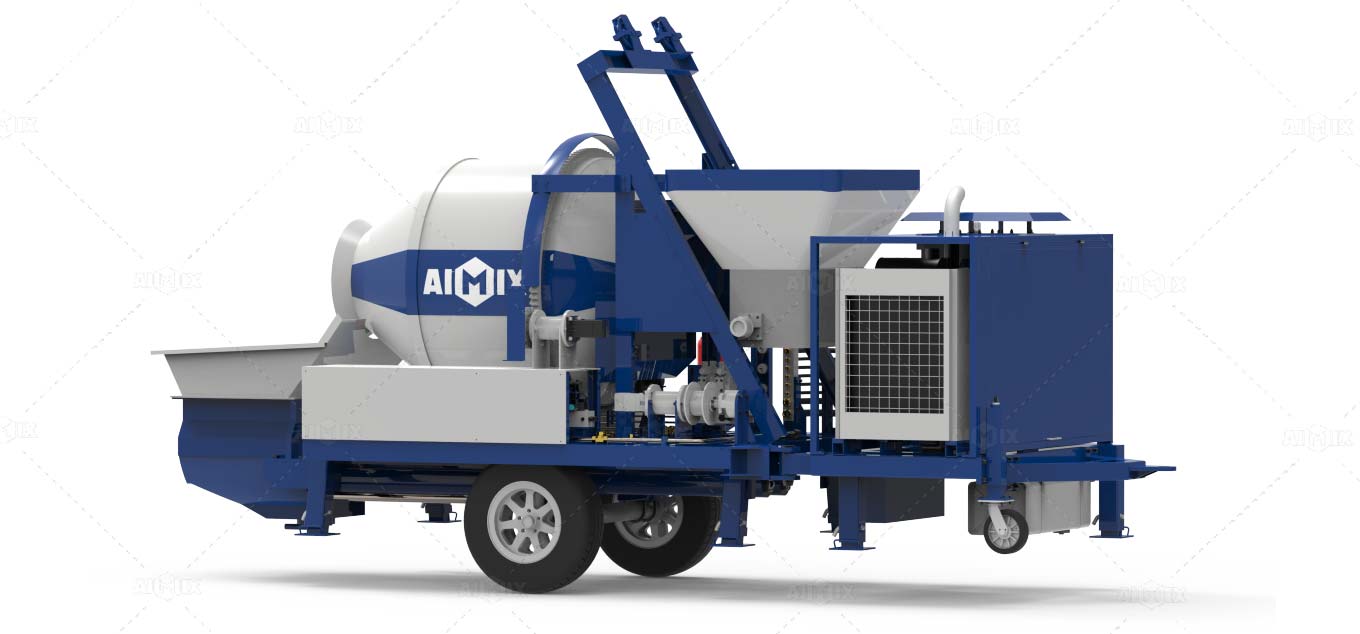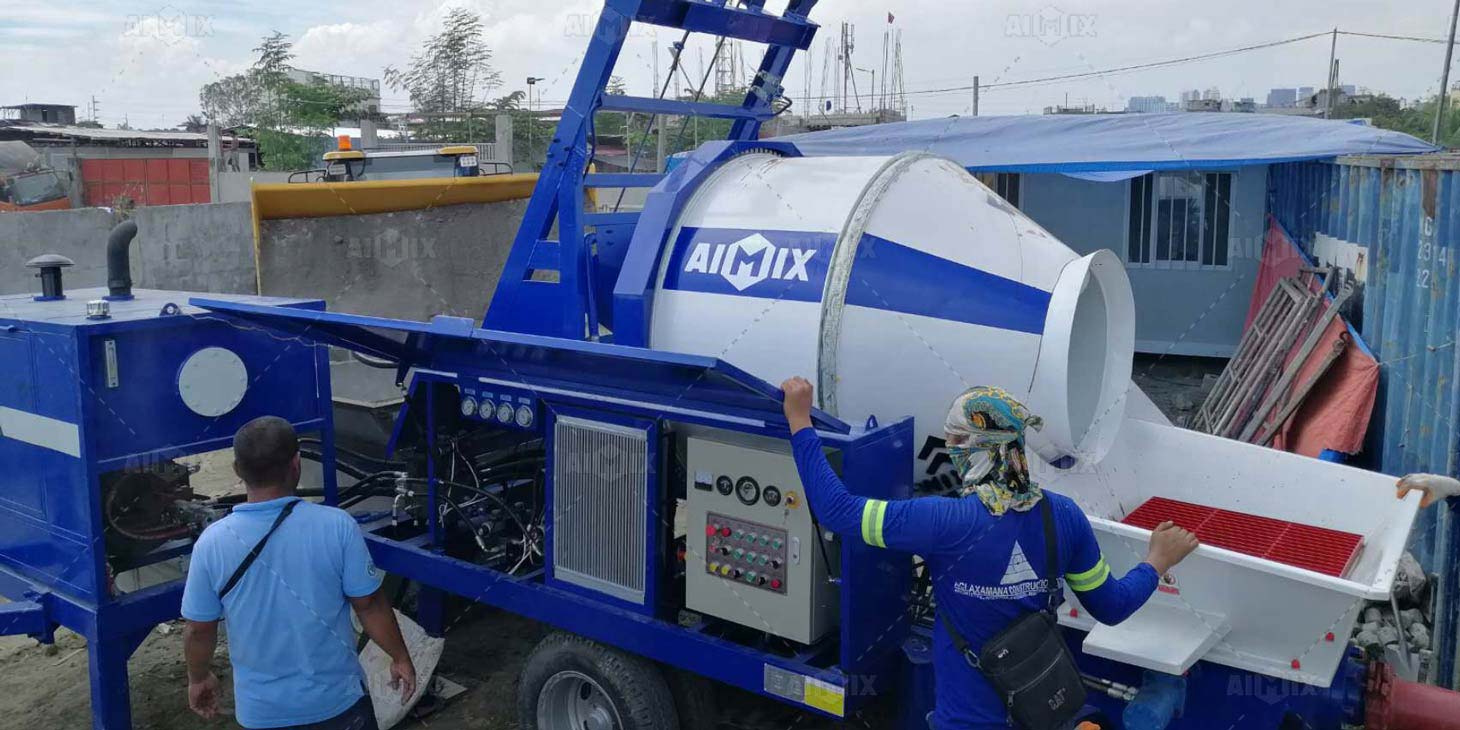Maintaining the mixing drum of a concrete mixer pump is crucial for ensuring consistent performance and extending the equipment’s lifespan. Neglecting proper cleaning and maintenance can lead to concrete buildup, reduced efficiency, and costly repairs. In this article, we will delve into the essential steps and techniques for effectively cleaning and maintaining the mixing drum of a concrete mixer pump.
The Importance of Cleaning and Maintenance
Effective cleaning and maintenance of the mixing drum are essential for several reasons. Firstly, it ensures the quality of the concrete produced. A clean drum prevents the accumulation of hardened concrete residue, which can contaminate fresh batches and compromise the integrity of the mix. Secondly, regular concrete pump small maintenance helps identify and address potential issues early, preventing costly breakdowns and downtime. Lastly, proper cleaning and maintenance contribute to the overall safety of the operation by reducing the risk of equipment failure and accidents.
Prevent Concrete Buildup
One of the primary objectives of cleaning the mixing drum is to prevent the buildup of concrete residue. Over time, concrete can harden and adhere to the inner surfaces of the drum, forming a layer of buildup known as “concrete slump.” This buildup not only reduces the effective capacity of the drum but also increases the risk of blockages and uneven mixing. By regularly cleaning the drum after each use, operators can prevent concrete buildup and ensure optimal performance.

Extend Equipment Lifespan
Regular maintenance not only keeps the mixing drum clean but also helps prolong the lifespan of the entire mixer pump concrete. Concrete residue left unchecked can accelerate wear and corrosion on critical components, such as the mixing blades and drum liner. By implementing a comprehensive maintenance regimen that includes cleaning, lubrication, and inspection, operators can mitigate wear and tear, ensuring the equipment operates efficiently for years to come.
Effective Cleaning Techniques
Cleaning the mixing drum of a concrete mixer pump requires a systematic approach and the use of appropriate techniques. Here are some effective techniques for ensuring thorough cleaning:
Manual Scrubbing
For routine cleaning, manual scrubbing is often the most practical method. Using a stiff-bristled brush or scraper, operators can manually remove concrete residue from the inner surfaces of the drum. It’s essential to scrub thoroughly, paying special attention to hard-to-reach areas and corners where buildup tends to accumulate. Additionally, using a mild detergent or concrete dissolver can help loosen stubborn residue, making it easier to remove.

High-Pressure Washing
In cases of heavy buildup or stubborn residue, high-pressure washing may be necessary to achieve thorough cleaning. High-pressure water jets can effectively dislodge hardened concrete and flush out residue from the drum’s interior. However, operators should exercise caution to avoid damaging the drum or other components with excessive pressure. Proper safety measures, including wearing protective gear, should be observed when using high-pressure washing equipment.
Chemical Cleaning Agents
In situations where manual scrubbing and high-pressure washing are insufficient, chemical cleaning agents may be employed to dissolve hardened concrete residue. These agents typically contain acids or enzymes that break down the chemical bonds in the concrete, facilitating easier removal. However, operators should exercise caution when using chemical cleaners, as they can be corrosive and harmful if not handled properly. It’s essential to follow the manufacturer’s instructions and safety guidelines when using chemical cleaning agents.
Regular Maintenance Practices
In addition to cleaning, regular maintenance practices are essential for keeping the mixing drum and other components of the AIMIX concrete pump in optimal condition. Here are some key maintenance practices to include in your routine:
Inspecting for Wear and Damage
Regular inspections of the mixing drum, mixing blades, and other components are crucial for identifying signs of wear, damage, or corrosion. Any worn or damaged parts should be promptly repaired or replaced to prevent further deterioration and ensure safe operation.
Lubricating Moving Parts
Proper lubrication of moving parts, such as bearings, gears, and shafts, helps reduce friction and extend their lifespan. Operators should regularly grease or lubricate these components according to the manufacturer’s recommendations to maintain smooth operation and prevent premature wear.
Calibrating Equipment
Periodic calibration of the concrete mixer pump ensures accurate measurement and consistent mixing performance. Operators should calibrate the equipment regularly to maintain optimal mixing ratios and prevent deviations that could affect the quality of the concrete produced. Find a best pump on this page: https://aimixconcretesolution.com/concrete-pump/mini/.
In conclusion, proper cleaning and maintenance of the mixing drum are essential for ensuring the efficient operation and longevity of a concrete mixer pump. By implementing effective cleaning techniques and regular maintenance practices, operators can prevent concrete buildup, extend equipment lifespan, and maintain optimal performance for years to come.